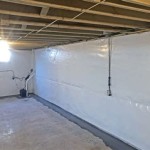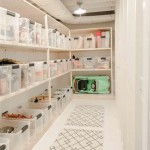Plumbing A Bathroom In A Basement
Installing a bathroom in a basement can be a great way to add value and functionality to your home. However, it's important to remember that plumbing a bathroom in a basement is not as simple as plumbing a bathroom on the main floor. There are a few additional challenges that you'll need to overcome, such as dealing with the potential for flooding and ensuring that the drains are properly vented.
If you're planning on plumbing a bathroom in your basement, it's important to do your research and make sure that you understand the challenges involved. You'll also need to obtain the necessary permits and hire a qualified plumber to do the work. With a little planning and preparation, you can add a beautiful and functional bathroom to your basement.
### Challenges of Plumbing a Bathroom in a BasementThere are a few challenges that you'll need to overcome when plumbing a bathroom in a basement. These include:
-Flooding
: Basements are prone to flooding, so it's important to take steps to protect your bathroom from water damage. This includes installing a sump pump and waterproofing the walls and floor. -Drainage
: The drains in a basement bathroom need to be properly vented to prevent sewage from backing up into the bathroom. This can be a challenge, as the drains will need to be run through the floor and up through the walls. -Ventilation
: A bathroom in a basement needs to be properly ventilated to prevent mold and mildew from growing. This can be done by installing a ventilation fan or opening a window. ### How to Plumb a Bathroom in a BasementIf you're up for the challenge, here are the steps on how to plumb a bathroom in a basement:
1.Plan your layout
: The first step is to plan the layout of your bathroom. This includes deciding where the toilet, sink, and shower will be located. 2.Install the plumbing
: Once you have a plan, you can start installing the plumbing. This includes running the water supply lines, drain lines, and vent pipes. 3.Install the fixtures
: Once the plumbing is installed, you can install the fixtures. This includes the toilet, sink, and shower. 4.Test the plumbing
: Once the fixtures are installed, you need to test the plumbing to make sure that everything is working properly. This includes checking for leaks and making sure that the drains are draining properly. ### Tips for Plumbing a Bathroom in a BasementHere are a few tips for plumbing a bathroom in a basement:
-Use a sump pump
: A sump pump is a device that pumps water out of a basement. This is important to prevent flooding. -Waterproof the walls and floor
: Waterproofing the walls and floor will help to protect your bathroom from water damage. -Vent the drains properly
: The drains in a basement bathroom need to be properly vented to prevent sewage from backing up into the bathroom. -Install a ventilation fan
: A ventilation fan will help to prevent mold and mildew from growing in your bathroom. -Hire a qualified plumber
: If you're not comfortable plumbing a bathroom yourself, it's important to hire a qualified plumber to do the work. ### ConclusionIf you're planning on adding a bathroom to your basement, it's important to remember that the project will be more challenging than plumbing a bathroom on the main floor. However, with a little planning and preparation, you can add a beautiful and functional bathroom to your basement.

How To Plumb A Basement Bathroom Diy Family Handyman

How To Plumb A Basement Bathroom Diy Family Handyman

How Do I Vent The Plumbing For My Basement Bathroom Home Improvement Stack Exchange

Basement Bathroom Layout Up To Code Doityourself Com Community Forums

How To Add A Bathroom Basement The Easy Way Diy Family Handyman

Basement Toilet Pump Plumbing Inspections Internachi Forum

How To Plumb A Basement Bathroom

How To Diy Bathroom In Basement Without Breaking Concrete

Basement Bathroom Rough In Plumbing Tour

How To Finish A Basement Bathroom With Rough In Plumbing Plumbwize
See Also








